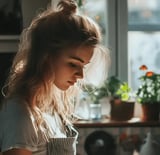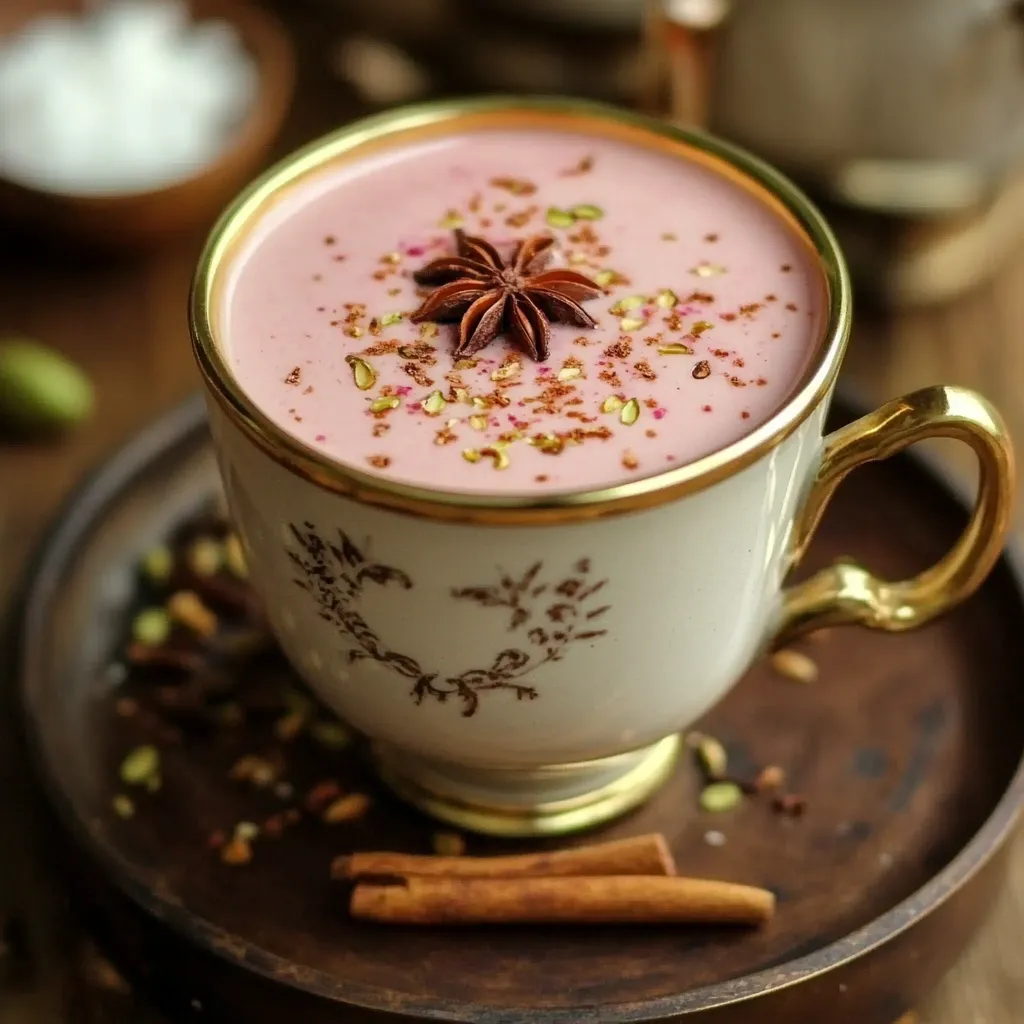 Pin it
Pin it
The enchanting pink hue and aromatic spices of Kashmiri Pink Chai create a sensory experience that goes beyond ordinary tea. This centuries-old recipe combines green tea, warm spices, and a touch of salt to create a uniquely comforting beverage that's both visually stunning and deeply satisfying.
Making this chai in my kitchen always reminds me of my first cup in a small Kashmir teahouse. The owner shared that the key lies in patient brewing and careful attention to temperature.
Essential Ingredients
- Kashmiri Green Tea: Traditional choice, though regular green tea works well
- Baking Soda: The catalyst for the signature pink color
- Whole Milk: Creates the perfect creamy texture
- Star Anise: Adds subtle licorice notes
- Cardamom: Fresh pods provide more flavor than pre-ground
- Salt: Don't skip it; it enhances all other flavors
Through years of making this chai, I've learned that quality ingredients and proper technique transform a good cup into an exceptional one.
Detailed Instructions
- 1. Initial Brewing:
- Start with fresh, cold water in a heavy-bottomed pan. Bring to a rolling boil before adding tea leaves. The water's temperature affects how the tea releases its flavors.
- 2. Color Development:
- Add baking soda gradually, stirring gently. Watch for the fascinating color change - from green to reddish-brown. This reaction is crucial for achieving the final pink shade.
- 3. Spice Infusion:
- Add star anise, crushed cardamom, and cinnamon. Let simmer on low heat, allowing spices to release their oils. Watch for the liquid to reduce by half, concentrating flavors.
- 4. Milk Integration:
- Pour milk in a steady stream while stirring. The mixture will gradually transform to its signature pink color. Keep heat moderate to prevent scorching.
- 5. Final Simmering:
- Simmer for 10-15 minutes, stirring occasionally. The chai should develop a rich, creamy consistency with a vibrant pink hue.
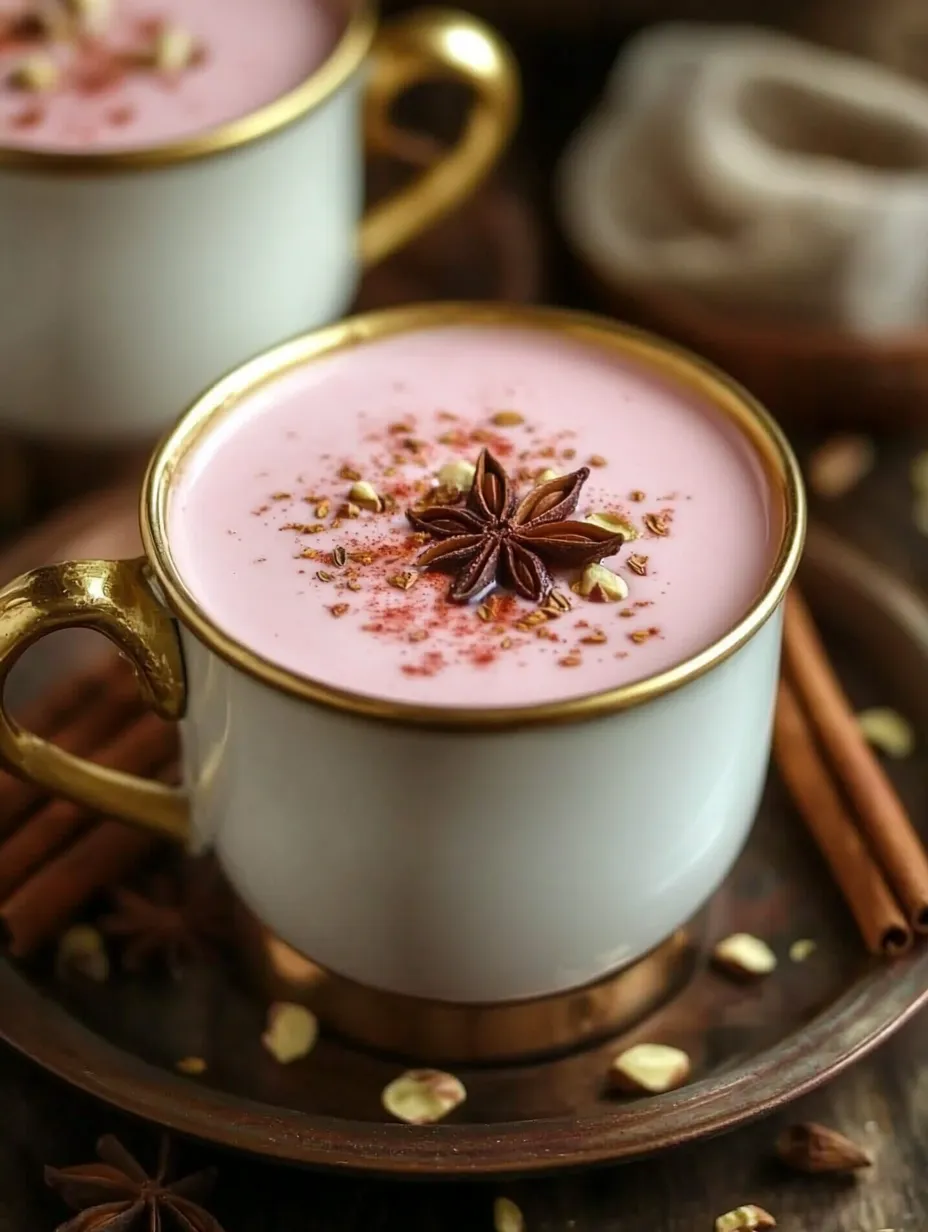 Pin it
Pin it
Each morning in Kashmir starts with the rhythmic sound of wooden mallets churning this pink elixir in large samovars. My aunt taught me that patience during the simmering stage develops the deepest flavors.
Perfect Tea Selection
Choose whole leaf green tea for best results. Avoid tea bags as they can make the chai bitter.
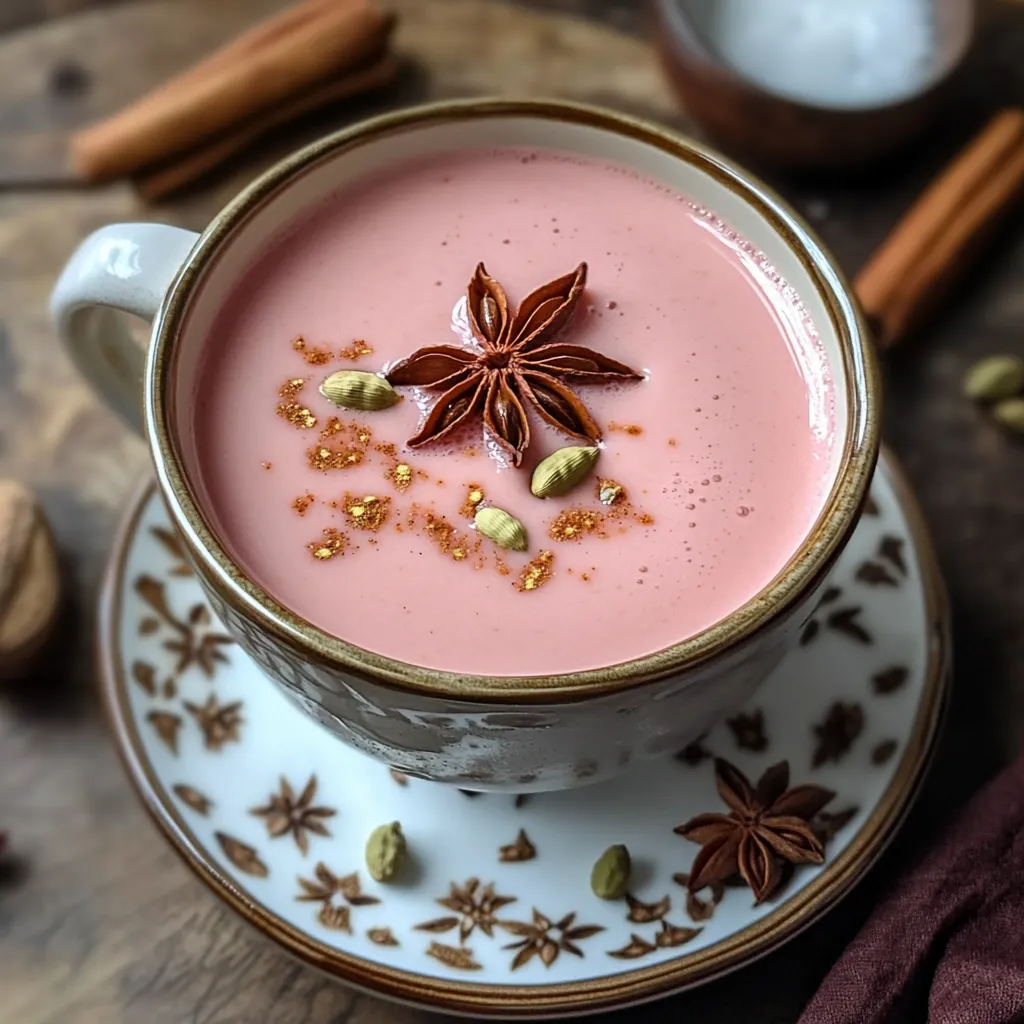 Pin it
Pin it
Temperature Control
Keep heat moderate after adding milk. Too high heat can cause curdling and affect the final color.
Spice Balance
Toast whole spices lightly before adding for enhanced aroma. Adjust quantities based on personal preference.
Brewing Traditions
The art of making Kashmiri Pink Chai dates back centuries, passed down through generations in the Kashmir Valley. Each family adds their unique touch while maintaining the essential elements that make this beverage special. From the bustling streets of Srinagar to quiet mountain homes, the ritual of preparing noon chai brings people together. The pink color, achieved through careful oxidation, represents more than just visual appeal - it's a testament to the maker's skill and patience. Modern variations embrace new ingredients while respecting traditional techniques.
Cultural Significance
In Kashmir, pink chai symbolizes hospitality and community. Traditionally served at weddings, family gatherings, and religious celebrations, it's more than just a beverage - it's a conversation starter and social cornerstone. The warming properties of the spices make it especially popular during Kashmir's cold winters. Many families still use ancient copper samovars, believing they enhance the tea's flavor. The addition of crushed nuts, particularly pistachios and almonds, reflects the region's abundance of dry fruits.
Health Benefits
Beyond its rich taste, Kashmiri Pink Chai offers numerous health benefits. The green tea base provides antioxidants, while cardamom aids digestion. Cinnamon helps regulate blood sugar levels, and star anise offers anti-inflammatory properties. The salt content helps maintain electrolyte balance, especially beneficial in cold weather. The combination of milk and spices creates a warming effect that Kashmiris believe helps maintain body temperature during harsh winters. The unique preparation method also enhances the bioavailability of certain nutrients.
Modern Adaptations
Contemporary versions of pink chai embrace dietary preferences while maintaining its essence. Vegan alternatives using almond or oat milk create equally creamy results. Some cafes offer sugar-free versions sweetened with dates or stevia. The traditional recipe has inspired creative variations like pink chai ice cream, lattes, and even desserts. Social media has sparked global interest in this unique beverage, leading to fusion recipes that combine Kashmiri traditions with international flavors.
Serving Suggestions
Pink chai pairs beautifully with traditional Kashmiri breads like girda or lavasa. For a modern twist, serve it alongside butter cookies or shortbread. The tea can be enjoyed throughout the day, but it's particularly warming as a breakfast drink or afternoon pick-me-up. During summer months, an iced version provides refreshing relief. Some enjoy it as a dessert drink, complementing its natural sweetness with honey or condensed milk. The presentation matters - traditional copper cups enhance both appearance and taste.
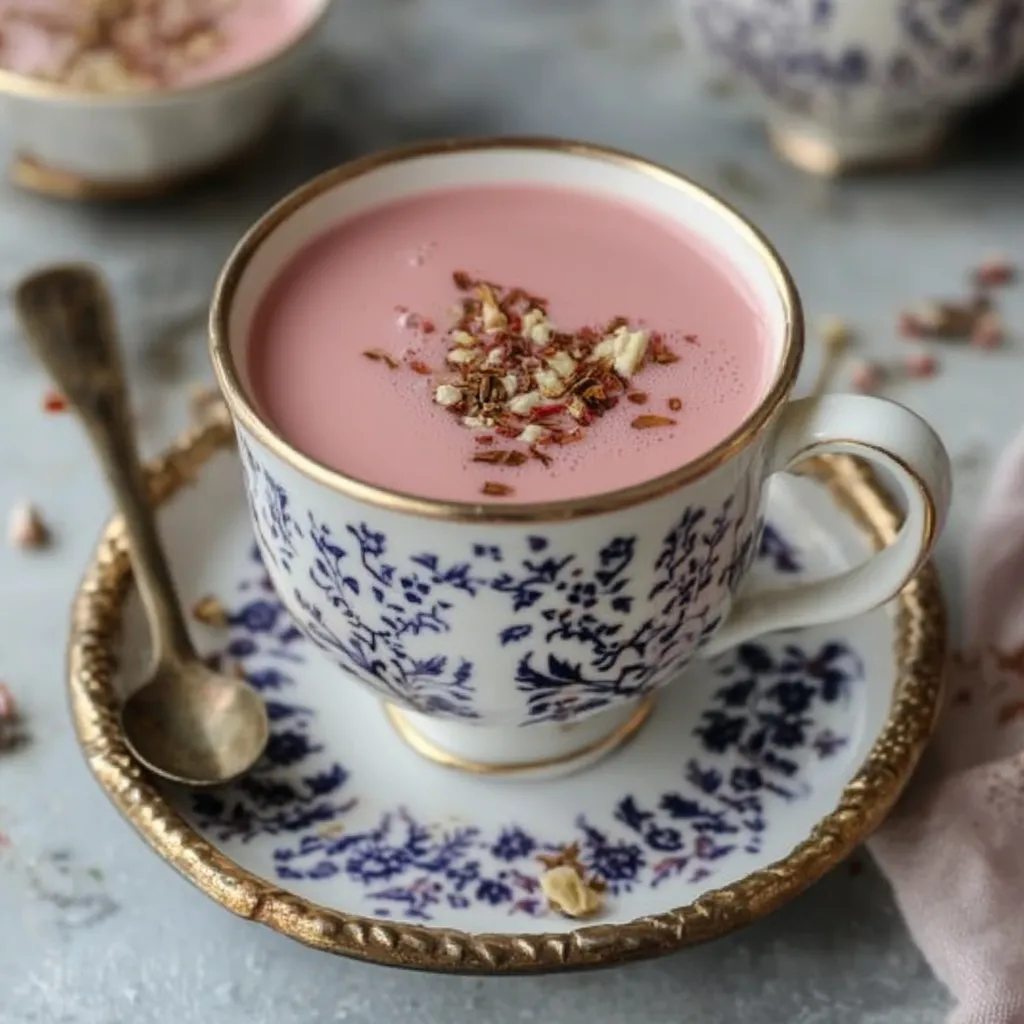 Pin it
Pin it
The art of making perfect Kashmiri Pink Chai lies in understanding how each ingredient contributes to its unique character. This recipe connects us to centuries of tradition while creating new memories around each steaming cup.
Frequently Asked Questions
- → Why does it turn pink?
- The chemical reaction between baking soda and tea creates the pink color.
- → What tea should I use?
- Kashmiri or Himalayan green tea is traditional, but other green teas work.
- → How long does it take?
- About 1 hour total for proper flavor and color development.
- → Is whole milk necessary?
- Yes, whole milk gives the best texture and color.
- → Can I make it in advance?
- Best served fresh but can be reheated carefully.
